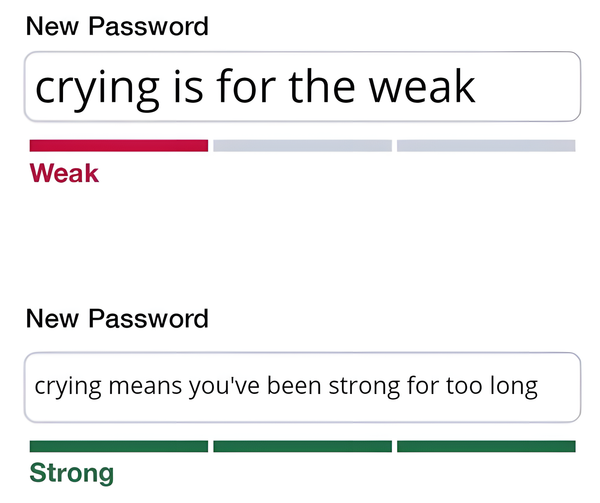Teamwork Habits for Leaders
3 tips to make your teamwork … work.

I'm truly surprised by how little attention many teams, especially senior leadership teams, pay to building strong teamwork habits. It's something that's bothered me quite a bit, and I believe it's a crucial area that deserves more of our time and effort.
Today, I’m bringing three tips for you.
Embracing the Role of a Listener: Not Always the Main Character
Have you ever found yourself in a meeting, feeling the urge to take center stage and lead the conversation? I've certainly been there many times. However, with experience, I've come to realize the profound importance of occasionally stepping back from the spotlight. In moments of uncertainty or lively debate, there's incredible value in hitting the pause button, tuning in, and simply observing the dialogue.
The shift from being the talker to the listener has, without a doubt, been a game changer in my journey as a leader. It's remarkable how much we can glean from the room when we create space for others to share their ideas and solutions. This practice not only enriches our discussions but also unlocks the full potential of everyone on the team.
Now, let's get practical. Here are some actionable steps to embrace this role of a listener effectively:
- Silence Your Inner Monologue: When someone else is speaking, resist the urge to formulate your response in your head. Instead, focus entirely on what they're saying. This simple act can improve your understanding and demonstrate genuine interest.
- Ask Open-Ended Questions: Encourage your team members to share their thoughts by asking open-ended questions. For instance, instead of saying, “Do you agree with my idea?” try asking, “What are your thoughts on this issue?” This invites diverse perspectives.
- Practice Active Listening: Show that you're engaged and attentive. Maintain eye contact, nod occasionally, and offer verbal affirmations like “I see what you mean” or “That's an interesting point.” This validates the speaker's input.
- Avoid Interrupting: Give others the space to finish their thoughts before chiming in. Interruptions can stifle creativity and deter team members from speaking up.
- Summarize and Reflect: After someone has shared their viewpoint, summarize what you've heard to ensure you understand correctly. This not only reinforces your comprehension but also conveys your respect for their perspective.
Assessing and Addressing Team Needs: What Does the Group Need Right Now?
As leaders, our instinct is often to leap into action with solutions at the ready. However, here's a question I've grown to appreciate, one that I now regularly pose to both myself and my team: “What does the group need right now?” This deceptively simple inquiry has led us down a path of profound discoveries and has fundamentally transformed the way we approach teamwork.
What we've realized is that the team's needs can vary significantly depending on the situation. Sometimes, the team requires fewer ideas and more decisiveness to propel us forward. On other occasions, it's about throwing open the gates to a brainstorming session, welcoming a cascade of diverse perspectives and ideas. Striking the right balance between decision-making and idea generation is the key to success. It's about attuning ourselves to the team's current needs and flexibly adapting our approach accordingly.
Now, let's dive deeper into practical advice on how to assess and address your team's needs effectively:
- Regular Check-Ins: Schedule periodic check-ins with your team, whether through one-on-one discussions or group meetings. Inquire about their current challenges, goals, and preferences in terms of support.
- Listen Actively: When your team members express their needs or concerns, listen attentively without rushing to provide solutions. Sometimes, they might need a sounding board more than immediate answers.
- Tailor Communication: Adapt your communication style based on the situation. When clarity and direction are paramount, be concise and direct. When innovation and collaboration are needed, foster an environment where creativity can thrive.
- Facilitate Discussions: Be proactive in facilitating discussions that align with the team's needs. If it's time for decision-making, guide the process decisively. If it's idea generation, create space for brainstorming sessions.
- Flexibility is Key: Recognize that team needs can change rapidly. Be ready to pivot and adjust your leadership approach as circumstances evolve.
- Seek Feedback: Encourage your team to provide feedback on your leadership style and whether it aligns with their current needs. Constructive criticism can help you fine-tune your approach.
- Empower Team Members: Empower your team members to take ownership of their needs and proactively seek support when necessary. Foster a culture where everyone feels comfortable sharing their requirements.
Clarity Is Key: Making Everything Explicit
We've all heard the saying, “Assumptions can be risky,” and when it comes to working in a team, this saying is very true. I've learned that being super clear about every decision, agreement, and understanding has made a big difference for. It means going beyond just nodding our heads in agreement. Instead, we make sure that everyone's ideas are heard, and we write down all our decisions. This kind of clarity has helped us avoid misunderstandings and build stronger trust. By being clear about everything, we've become a more united team, ready to face any challenges that come our way.
Some food for thought:
- Set Clear Expectations: Start by telling everyone in the team what you expect from them. Make sure everyone knows their job, what they're responsible for, and what the team is trying to achieve. This way, there's no confusion, and everyone is working toward the same goal.
- Write Down Decisions: After meetings or discussions, write down the important decisions, tasks that need to be done, and when they should be finished. Share this with the team so that everyone knows what they're supposed to do.
- Check in Regularly: Have regular meetings where everyone shares updates and talks about how things are going. This can help catch any misunderstandings early.
- Clear Documentation Standards: Establish clear and consistent documentation standards for architectural plans, RFCs, and any other project-related documents. Ensure that team members understand and follow these standards.
- Keep RFCs Concise: RFCs should be concise and to the point. Avoid unnecessary jargon or overly complex language. Use examples and real-world scenarios to illustrate concepts.
- Use Templates: Provide templates for creating RFCs, architectural documents and decisions logs. Templates can guide team members in including all relevant information and maintaining consistency.
- Communication Channels: Establish clear communication channels, so the team doesn’t need to guess where to share or seek information.
We’ve only scratched the surface, and I’m sure you have other team-enabling ideas — I’d love if you shared what worked for you in the past in the comments!



